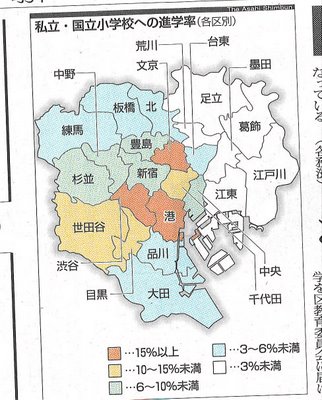...this will be of interest to the powers that be.
The shakai no kakusa mini-crisis (everything in Japan is a mondai, but we can be a little more discerning) has got the editorial chattering classes in a tizzy:
"Oh, how will we survive with society divided into winners and losers?" they cry to the merciless, unblinking stars.
The correct answer, a snide, "Excuse me, but how do sports leagues cope with the horrible, divisive strains of having some teams winning more games than others?" will probably not win one any invitations to the nicer television programs. Also, the question of why wage differentials are increasing throughout the developed world trawls up vast caches of ugly cultural warmongering ("The only good Anglo-Saxon capitalism is a dead Anglo-Saxon capitalism." -- Fujiwara Masahiko) that really need a hard data reply.
That is why I am intrigued by the two sentences flagged by economist Tyler Cowen. Professor Thomas Lemieux of the University of British Columbia, after examining U.S. data, finds a strong correlation between increasing income differentials within similar groups as both age and education level increases. As a society, or more properly a working population, grows older and more educated, the fractional differences between individuals compound, creating a more varied income spread. Indeed, Lemieux finds that all residual wage differentials can be accounted for by looking at the average age and education level of a workforce.
Now the Socialists and the more reactionary elements of the Democratic and Liberal Democratic parties have been criticizing the current Cabinet for exacerbating if not encouraging the rise in Japan's Gini coefficient. The criticisms have a strong xenophobic tinge, possibly because certain social scientists at some point found egalitarianism to be a Japanese trait (which is, of course, why we have keigo, variable depth bowing and lifelong senpai-kohai relationships--all are manifestations of the profound egalitarianism at the core of Japanese society). Inequality, or more precisely, income inequality, is posited as being a foreign-- mayhap even an "American"-- import.
My guess is if one runs the numbers for postwar era, one will find Lemieux's correlation in the Japanese data. If so, and if Lemieux's thesis checks out, then Japan's income inequalities are greater because its work force is older and better educated-- shikata ga nai.
Speaking of shakai no kakusa--did you see this map in the evening Asahi Shimbun of June 30?

Now Earl "The Pearl" Kinmouth has for many a moon been declaiming that differences in the education expectations of the residents of eastern Tokyo versus those of western Tokyo should be considered prima facie evidence of strong class differences in modern Japan.
This map largely supports his point--though I would love to see it extended all the way out to Hachioji to see how places like Kunitachi and Musashino compare.
According to the accompanying article, a startling 24% of students in Shibuya-ku attend either a private or national school (Full disclosure - the Nine Year-Old attends a national school) rather their local district school. Bunkyo, Minato, Meguro, Setagaya--even Chiyoda (the seat of the national government!)--send at least 10% of their elementary students to non-public schools.
For reasons I can scarcely imagine, the Asahi Shimbun does not name the ward with the lowest ratio of students in private or national elementary schools. The paper only mentions that Shibuya's 24% rate is "20 times as high" as the rate of some of the eastern wards.
Somehow, I do not think this is because the public schools in the eastern wards are soooo much better than the public schools in the western wards.
Somehow, I think someday in the future the youngsters of the eastern wards are going to have wage differential resentments vis-a-vis their age peers from the western wards.
Maybe...just maybe.

No comments:
Post a Comment